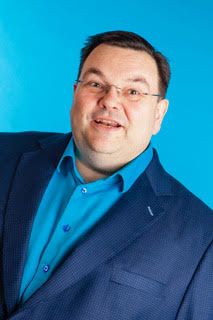Motivation
Want to Achieve? Throw Out the Old Rules
High achievers don't set goals that are merely realistic or achievable.
Posted March 26, 2024 Reviewed by Hara Estroff Marano
Key points
- Successful people don't set so-called SMART goals, they set massive ones.
- Objectives need to be aligned with an action plan.
- Start with a great big to-do list of all the steps you need to achieve your goal, then prioritise them.
- Begin with the toughest steps and give them all of your energy and focus. Everything will follow from there.
You’ve almost certainly read or been told of the importance of goal-setting in personal, career, and business success. And it’s very likely that, as part of that conversation, you’ve also heard of the importance of SMART goals—objectives that are specific, measurable, assignable, realistic, and time-related.
On the face of it, SMART goals make sense, guarding against vague dreams and fantasy. Yet, do they really lead to success? Not according to David Hyner.

At the age of 30, Hyner reflected on his career and decided that he had strived for, and achieved, nothing at all. He had always had big goals and aspirations but shied away from achieving them because of immaturity and a fear of failure. He had his own catering business in Birmingham in the U.K. but that didn’t feel like the pinnacle of achievement he had once dreamt of.
He wanted to change things but getting more formal education was not an option for him, having had bad experiences in his childhood. Hyner was unsure of how to change things until a friend suggested that he ask someone who was happy and successful how they did it?
So he did.
Learn from the Best
He started with his clients, some of the most successful people in the Midlands, including football club owners, theatre impresarios and captains of industry. He asked them, "How do you think you behave differently from everyone else and how do you set goals?"
“They all thought and behaved very differently from what’s traditionally taught”, Hyner says. “But everything they said seemed easy. They all suggested that, as long as you’re not afraid of hard work and as long as you’re consistent with the right thoughts and behaviours, you will become more successful.”
Hyner became obsessed with the conversations and expanded the range of successful people he interviewed, trying to understand how they thought and behaved. He has now interviewed 258 high achievers over the last 23 years. He was looking for a catch—surely it couldn’t be as easy as they all claimed. But then he started to achieve his own successes, using the techniques successful people had shared with him.
And not one of them had mentioned SMART goals.
“Not a single one of the people I interviewed has ever used ‘smart’, ‘realistic’, or ‘achievable’ in their answer to my question, ‘How do you set goals?’”, Hyner explained. “The most common word I found used was ‘massive’”.
Not So SMART
According to Hyner, SMART is an acronym widely assumed to be the domain of the well-known management guru Peter Drucker. In fact, it was coined by George T. Duran, a director of corporate planning for the Washington Water Power Company and university lecturer who worked on multibillion-dollar water-utility projects. “Duran said that your objectives should be SMART—but when aligned with the action plan that accompanies them. In one interview, he stressed that, when you’re working on really big projects, the steps to your goal should be SMART rather than the goal itself.”
For Hyner, too much of the talk around goal setting is around the goals themselves. Not enough attention is paid to the steps you need to take to achieve the goal. Top achievers have both in clear focus and perfect alignment, both their goals (massive ones, obviously) and the steps on the way.
Hyner’s process is simple: “You write a great big to-do list of all the things you can think of that you’d have to do if you’re going to achieve your goal. You prioritise the steps, and then ‘go rhino!’”
While most of us like to put off the tougher tasks, that’s where Hyner insists we start. “You have to give everything you’ve got, whilst your time, energy, motivation, and resources are at their greatest, to the difficult, challenging or scary steps first. Every single day, for just five to seven minutes a day, take on those scary steps. That way, you don’t put off the hard things until the end. You don’t have the short-term ego boost of crossing things off your to-do list because they’re easy to complete.
“What is the most important, or scariest, task on that list? The task that will take you closer to your massive goal. Do it. Do it willingly and full-heartedly. Give something the very best of you, and you will annihilate the scary tasks when your motivation is at its greates t,at the start of the day or the start of that massive goal.
“This is how top achievers approach it. Everything they have told me is simple to understand, do, and apply. But they do it relentlessly, consistently, and with a smile on their face”.
Making a Difference
Although he teaches goal setting to CEOs and industry leaders, much of Hyner’s work now involves working with young adults across the U.K. After his own tough time at school, where he described himself as “mediocre at best”, he gets joy from helping youngsters today aim for the stars.
“I became a bit obsessed with helping young people, especially those who were like me; the ones who get lost and left behind, capable of incredible things but never tapped into.
“We’ve had a student get mentored by an American president. We’ve had students become millionaires while still in education. We’ve had Amazon number-one best-selling authors, British and European sporting champions, all achieved after setting massive goals. And to me, other than my family, that’s my greatest achievement. Just having some small part in helping people do cool stuff.”
References
Doran, George T. (November 1981). There's a S.M.A.R.T. Way to Write Management's Goals and Objectives. AMA Forum.




